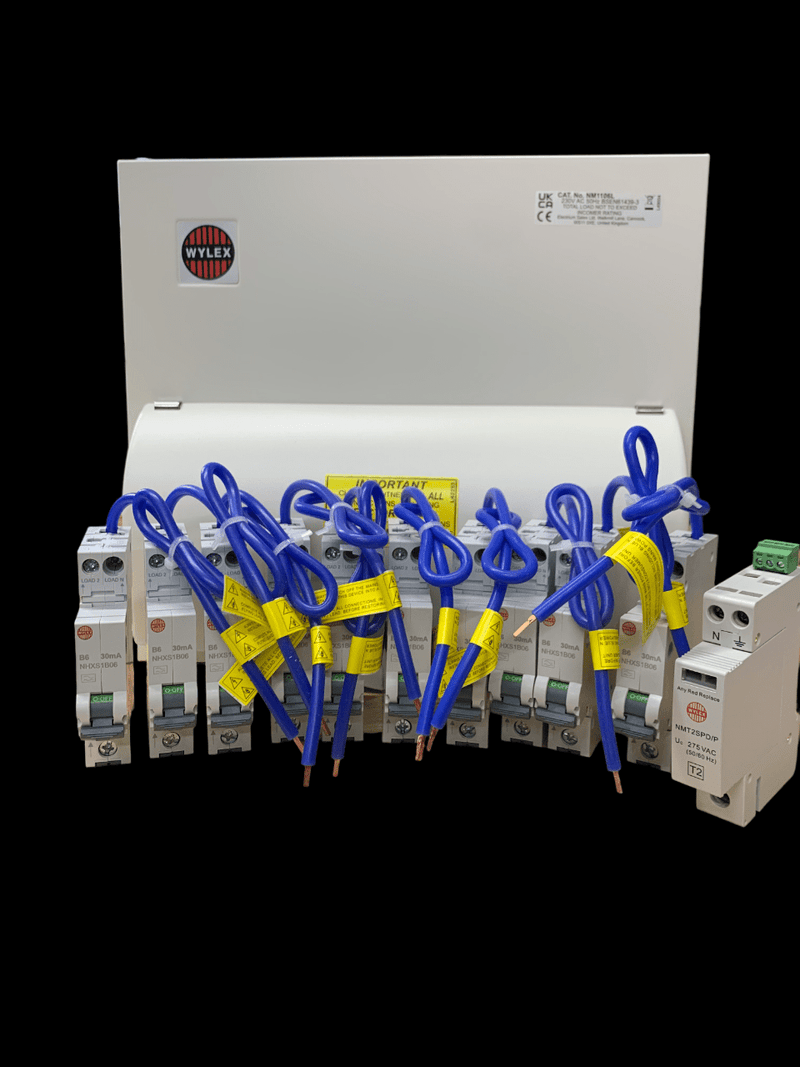The Role of Customer Systems in Reliable Energy Administration Equipment
Customer units are essential to reliable power monitoring systems, offering as the key circulation factors for electrical power within structures. The advent of smart technologies has even more enhanced their capability, allowing for real-time information monitoring and nuanced energy intake evaluation.
Recognizing Consumer Units

Understanding the duty of consumer units starts with identifying their vital feature in protecting electrical systems. By isolating mistakes within details circuits, customer devices protect against widespread failures and possible fire hazards. This isolation is accomplished through the use of circuit breakers that trip or integrates that impact when a fault is identified, therefore removing the electrical flow to the affected circuit.
Moreover, customer devices promote the orderly distribution of power, boosting the effectiveness of energy use. They enable the methodical monitoring of electrical lots, which can be especially vital in business and commercial settings where need can vary substantially. Correctly conserved customer systems add to the durability of electric systems and aid in decreasing downtime triggered by electrical failures, ultimately sustaining the seamless procedure of energy-dependent facilities.
Smart Technologies Combination

A crucial benefit of wise customer units is their capability to utilize advanced formulas and artificial intelligence for predictive analytics. This permits for preemptive adjustments based on use patterns, weather prediction, and various other variables, substantially enhancing total efficiency. Moreover, clever consumer systems facilitate demand response programs, where power use can be dynamically changed throughout top durations to stabilize the grid and decrease expenses.
The integration of renewable resource resources, such as solar and wind, is likewise structured via clever customer systems. By smartly taking care of the intermittency of these sources, these units ensure a balanced and reliable energy supply. In addition, wise customer systems improve individual interaction by providing comprehensive insights and remote control capacities with mobile applications, promoting a much more aggressive method to energy conservation and sustainability.
Monitoring Power Intake
Structure on the abilities of wise modern technologies integration, checking power usage ends up being a crucial emphasis within power monitoring systems. Effective tracking works as the structure for recognizing energy ineffectiveness and carrying out restorative actions. By leveraging innovative metering facilities (AMI), real-time data on power use can be accumulated at discover here granular levels, providing important insights right into usage patterns and peak demand durations. This data-centric approach enables both customers and energy supervisors to make enlightened decisions aimed at lowering waste and improving total effectiveness.
Smart meters and Web of Points (IoT) devices play a pivotal function in this tracking process. These tools can track energy usage in real-time, transferring data to centralized systems for evaluation.
The integration of these technologies not only encourages customers with thorough details regarding their power use yet additionally sustains utility companies in managing load distribution a lot more successfully. Eventually, continuous and exact tracking is indispensable for accomplishing energy efficiency, cost savings, and sustainability objectives within energy management systems.
Optimizing Appliance Usage

One reliable approach involves identifying optimal and off-peak hours to change energy-intensive tasks, such as washing or dishwashing, to times when energy need is reduced. This not just lessens stress on the grid yet additionally takes advantage of on lower energy tariffs. In addition, incorporating maker discovering algorithms permits for predictive maintenance, ensuring devices operate at optimal efficiency and lengthening their life expectancy.
Energy monitoring systems can likewise incorporate user-specific choices and actions to tailor device usage timetables. For instance, wise lighting systems can change brightness based upon tenancy and natural light accessibility, while heating and cooling systems can keep convenience levels without excessive power use.
Promoting Sustainability
Advertising sustainability within energy monitoring systems involves not only improving efficiency yet additionally fostering eco accountable techniques. Consumer systems are essential to this process, as they offer real-time information and control devices that enable customers to keep an eye on and lower their energy consumption. By leveraging advanced modern technologies, customer units can determine energy-saving opportunities and assist have a peek at this website in the combination of eco-friendly power sources like solar and wind power.
One critical element of advertising sustainability is enlightening customers on the benefits of liable power usage. Via in-depth insights offered by consumer systems, customers can make informed choices that lessen their carbon impact. These systems can suggest optimal times for running high-energy home appliances based on grid demand and renewable energy accessibility, therefore lowering dependence on fossil fuels.
In addition, consumer devices sustain the fostering of clever grid modern technologies, which improve the general see this here effectiveness and integrity of power circulation. By allowing two-way communication in between consumers and utility providers, these systems can dynamically adjust to power needs, reducing waste and promoting the use of sustainable energy practices.
Conclusion
Consumer devices, as essential elements of energy management systems, significantly improve electrical security and efficiency within buildings with circuit protection and clever technology assimilation. Additionally, the consolidation of eco-friendly energy sources promotes sustainable practices, adding to minimized general energy intake and lower carbon footprints.
Advances in wise innovations have actually reinvented the abilities of power management systems, specifically with the combination of clever customer systems.Building on the abilities of clever innovations assimilation, checking energy usage ends up being an essential emphasis within power monitoring systems.Effective device use optimization is a vital element of power monitoring systems, intending to boost efficiency and lower unnecessary energy intake.Customer units, as integral elements of energy management systems, significantly improve electrical security and efficiency within structures with circuit protection and clever innovation combination. Additionally, the consolidation of renewable energy resources promotes sustainable practices, adding to lowered total energy consumption and reduced carbon footprints.